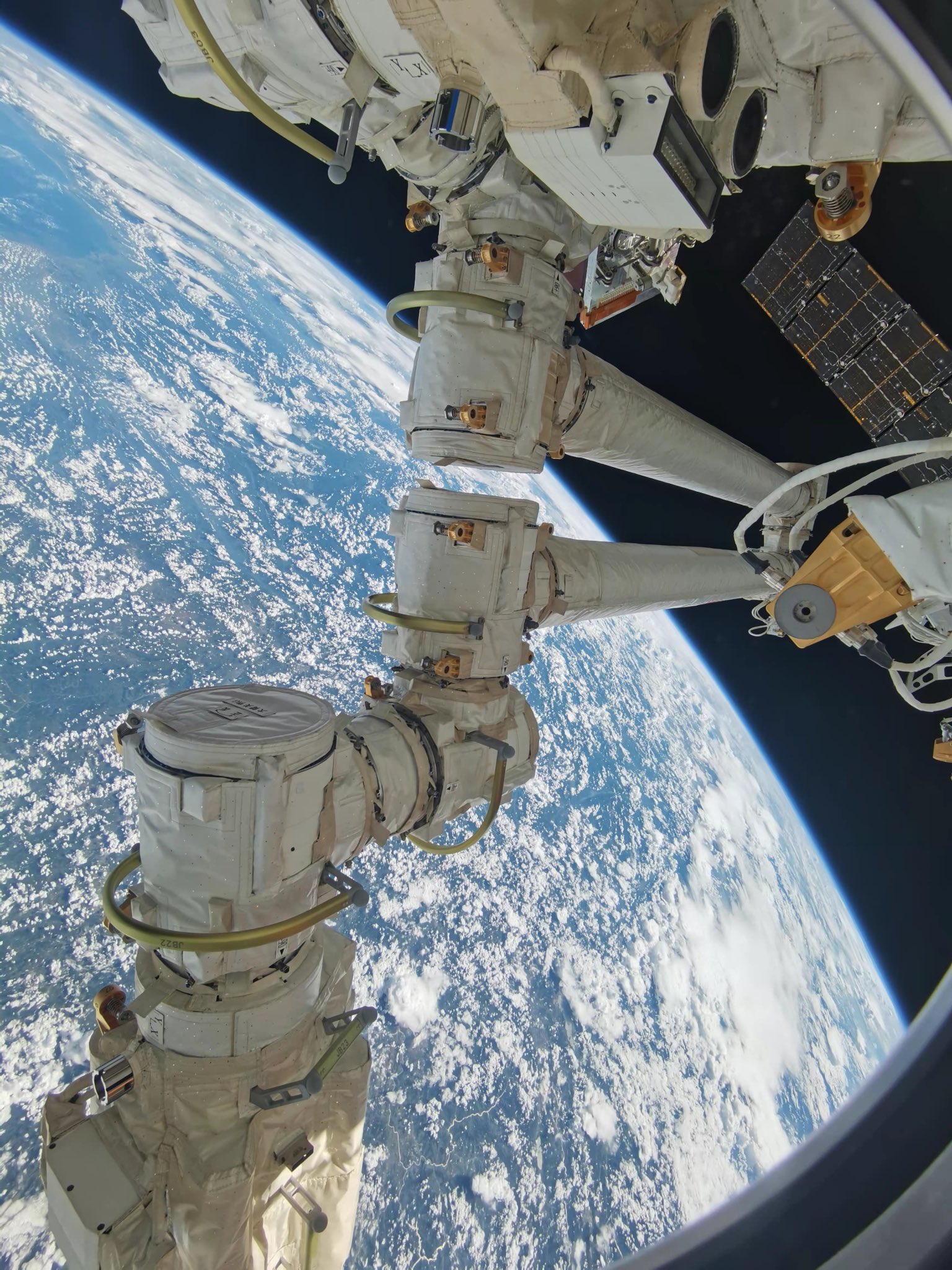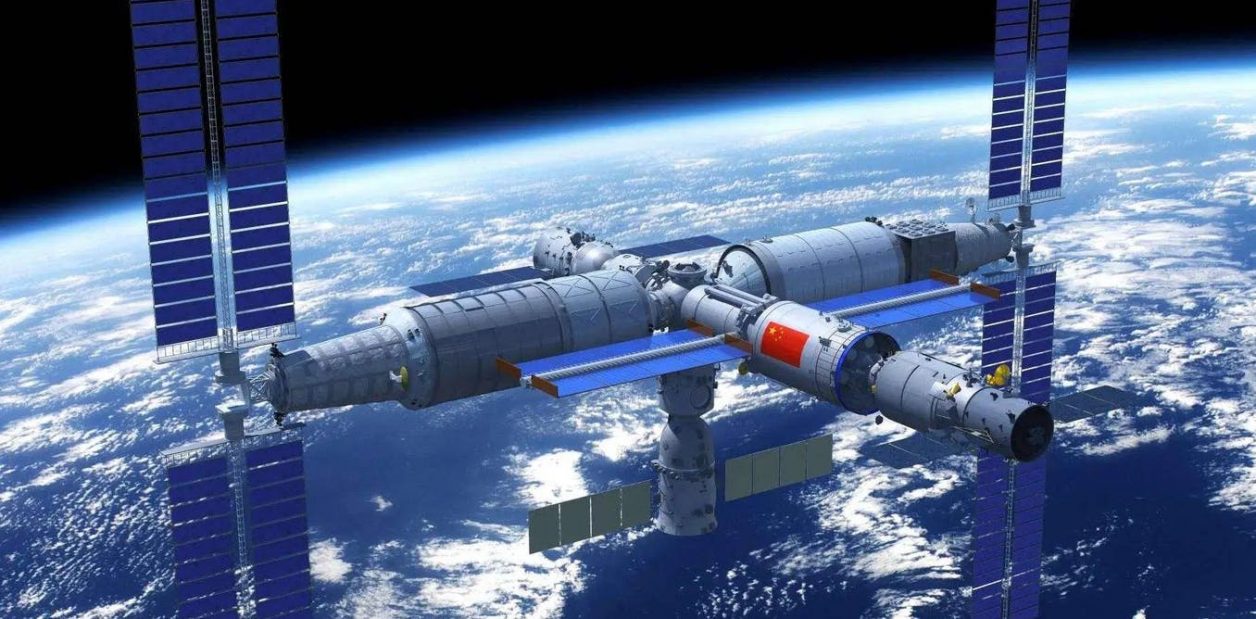China has announced that its space station, which will provide a bird’s-eye view of Earth and one that is widely seen as a vital strategic asset in space, will become operational this year, according to media reports.
The China Aerospace Science and Technology Corporation (CASTC) announced on January 5, that the country will finish construction of the space station, named Tiangong, in 2022.
By the time Tiangong becomes fully operational, China will be the only country to have its own space station as the existing International Space Station (ISS), a collaborative effort involving multiple stakeholders including NASA (United States), Roscosmos (Russia), JAXA (Japan), ESA (Europe), and CSA (Canada), will complete its service life.
The Chinese Space Station (CSS), which is under development, has been a talking point in the US military circles and the scientific community.
On January 6, with its massive robotic arm, the Chinese space station successfully grasped and transferred a cargo spacecraft. The 47-minute maneuver was the first test of Tiangong’s 10-metre (33-foot) robotic arm.
According to the China Manned Space Engineering Office, at 6:59 Beijing time on January 6, 2022, after about 47 minutes of cross-system coordination, the test of the space station's robotic arm translocation cargo spacecraft was successful. pic.twitter.com/VZTcxJYZkP
— Angelina (@SpaceGirlLina) January 6, 2022
“The mission proved the mechanical arm’s ability to handle high loads and assessed the feasibility and effectiveness of using it to maneuver a portion of the space station while in orbit.

The achievement has prepared the door for more in-orbit assembly work to begin later this year in preparation for the construction of the space station”, according to CGTN, China’s state-owned TV channel.
Why Is The Robotic Arm A Cause Of Concern?
The robotic arm of the space station initially held on to the Tianzhou 2 cargo spacecraft, which was docked at the Tianhe core module during the test.
The Tianzhou 2 was then released from its dock and moved in a circle by the arm before being rejoined and docked at the Tianhe again. Tianhe is placed at the center of the space station and performs control and management functions.
UK Joins The Hypersonic Bandwagon; Pledges Billions Of Pounds Amid Chinese, Russian ‘Muscle Flexing’
According to China Manned Space Programme, Tiangong’s robotic arm is capable of lifting objects weighing up to 20 tonnes and can move about outside the station.
In September last year, the cargo spacecraft Tianzhou 2 performed an automatic release and re-dock at the Tianhe core module. However, it was the first time when it was moved around using the robotic arm.
The Chinese astronauts had also gone on spacewalks after the core module Tianhe was launched into orbit in April last year to work on the robotic arm and guarantee that it was operational.
? The robotic arm of Tiangong Space Station (CSS) seen from Tianhe core module. Source: https://t.co/YN6zVElTCh pic.twitter.com/anK9kW98IP
— CNSA Watcher (@CNSAWatcher) November 8, 2021
Smaller versions of Tiangong’s robotic arm have been installed on China’s “scavenger satellites” to collect and direct space debris so that it can burn up in the Earth’s atmosphere. China has launched several scavenger satellites over the last decade.
Japan-Australia Defense Partnership To Give A Significant Boost To Larger QUAD Strategy Against ‘Notorious’ China
Nevertheless, the robotic arm technology has sparked fears in the United States about its military potential. Ever since the technology was demonstrated by China, the US has expressed fears about the Chinese equipment interfering with American satellites.
Earlier, James Dickinson, Commander of the US Space Command, had told a Congressional hearing that the technology “could be used in a future system for grappling other satellites”.

His comments had come in the backdrop of China launching a satellite called Shijian-21 with a robotic arm, as previously reported by Fox News. Dickinson also talked about another Chinese satellite, Shijian-17.
Dickinson told Congress in April last year that spacecraft like the Shijian-21 is part of an effort by China to seek “space superiority through space and space-attack systems.”
China launched the classified Shijian 21 satellite Saturday on what government officials described as an experimental "space debris mitigation" mission.
Read more: https://t.co/BBoGZdFC4C pic.twitter.com/7JRNZAyx1x
— Spaceflight Now (@SpaceflightNow) October 25, 2021
“Space-based robotic arm technology could be used in a future system for grappling other satellites”, he was quoted as saying by Washington Times.
In the case of a war, he claimed that the combatants would spend the first few minutes attempting to sabotage their adversary’s communication systems, such as America’s GPS.
China’s Engineering Marvel: Country’s ‘Stunning Lake Tunnel’ – The Longest In China – Opens For Traffic
This observation by American Space Commander indicates that a scenario where war between the two adversaries escalates and involves space combat is a possibility that is being considered in the United States even as it has flagged the militarization of space.
Interestingly, the International Space Station, of which the United States itself is a part, has had the robotic arm for a long time. Two robotic arms have long existed on the ISS: Canadarm 2 and the Japanese Experiment Module Remote Manipulator System. On the US and Japanese modules, both are critical for berthing visiting vehicles and grappling external payloads.

Two more robotic arms, the European Robotic Arm and Gitai S made their space flight to the ISS as recently as 2021.
So while the Americans already have access to this advanced and crucial space technology, its apprehension about Chinese technology appears unfounded.
The Space Race Heats Up
This year, the space race between the US and China is likely to heat up. China Aerospace Science and Technology Corporation revealed on its social media account that it has more than 40 space launches scheduled for 2022, including six manned space missions, as previously reported by the EurAsian Times.
US, Japan Pledge To ‘Deflate’ China’s Military Might; Beijing Says Washington & Tokyo Ganging Up Against China
The mission for 2022 will be “very arduous” and the number of space launches continues to remain high, the company said. “We need to fully complete various aerospace tasks, ensure the complete success of major flight test missions and accelerate the development of China as a space power,” the company chairman Wu Yansheng was quoted as saying.
China has made great progress in space programs in recent years after investing substantially. It had never conducted more than 10 launches a year until 2007. However, it has gained traction since then, launching 152 satellites in the past five years, more than any other country.
US Military Journal Suggests Taiwan Should Destroy Its Semiconductor Industry To Deter Chinese Invasion Plan
China surpassed the United States, the long-time leader in the industry, in terms of launches in 2018 and 2019. In 2020, the US recaptured the top position, with 44 launches compared to China’s 39.

Additionally, China and Russia have announced a collaborative effort to build a lunar base by 2027, eight years earlier than initially intended, in parallel to America’s $100 billion Artemis mission to return humans to the moon by 2025.
- Contact the author at sakshi.tiwari9555@gmail.com
- Follow EurAsian Times on Google News




